|
Tao Te Ching
THE TAOISM OF LAO TZU
|
Tao Te Ching
|
The Book
The Taoism of Lao Tzu Explained. The great Taoist philosophy classic by Lao Tzu translated, and each of the 81 chapters extensively commented. Click the image to see the book at Amazon (paid link). |
Big Is Small at First
We already know about non-action, wu-wei, and about the importance of avoiding to interfere, but what about tasting the tasteless?
Well, chapter 12 says that the five flavors dull the mouth. Spicy food is tiresome at length. Fireworks in the mouth deafen the palate. Chapter 12 also warns against a multitude of colors and tones. Spectacles are fun at first, but at length they dull the senses.
Tasting the tasteless is to increase one's sensitivity by being restrictive with stimuli. Sensations wear down the senses. When you increase your sensitivity you learn to taste what seems tasteless. You perceive nuance and observe the small things.
With increased sensitivity the small things grow in your perception of them, and you discover their importance. This is another way of saying what was stated in chapter 59: moderation means prevention. When you see the glimpses and listen to whispers, you become aware of things at the moment of their appearance.
They may be small and seem completely insignificant. But if you contemplate their possible consequences at length, you may be able to avoid disaster.
That's meeting the big while it's still small. Anyone with huge responsibilities must learn it, or crisis after crisis will appear.
Big problems start as small problems. That's when to solve them. Big obstacles start as small obstacles. That's when to overcome them.
This is true for one's personal life, as well as for the family, the town, the country, and the whole world. Whatever great problem we live with, if we look back we discover that it could have been solved easily in the beginning. But at that time nobody cared.
We are often stuck in the misconception that the world is a static place, although we can see that everything in it moves and changes constantly. When problems appear, they are usually quite small and nonthreatening. So we ignore them, thinking that they will stay that size forever. They don't.
Any problem not dealt with will grow. That's the way it is. We need to learn to deal with problems immediately. Then we will find that we need to do almost nothing.
Actually, many problems are initially so small that they are solved just by recognizing them. By discovering and exposing them, we make our world immune to their potential harm.
In the middle of his reasoning about big and small, Lao Tzu states that we should return animosity with virtue. That attitude alone would solve just about any major crisis in society, if it had been applied early on. Animosity feasts on being met by animosity. If not, it will wither.
So, to create a peaceful world we must learn not to respond to aggression with the same, but treat it in a noble manner. That's great virtue, in the sense of being morally superior as well as being the most efficient countermeasure.
Treating small issues as if they were big, is learning to take things seriously. Not only should we seriously consider what we want to do before doing it, but also what seems so insignificant that we feel no urge at all to deal with it. The danger lies in ignorance and indifference – especially in the latter.
In society, few things are as damaging as indifference.
NEXT
Tao Te Ching Explained
Preface
Introduction
Literature
translated and explained by Stefan Stenudd.
1 |
2 |
3 |
4 |
5 |
6 |
7 |
8 |
9 |
10 |
11 |
12 |
13 |
14 |
15 |
16 |
17 |
18 |
19 |
20 |
21 |
22 |
23 |
24 |
25 |
26 |
27 |
28 |
29 |
30 |
31 |
32 |
33 |
34 |
35 |
36 |
37 |
38 |
39 |
40 |
41 |
42 |
43 |
44 |
45 |
46 |
47 |
48 |
49 |
50 |
51 |
52 |
53 |
54 |
55 |
56 |
57 |
58 |
59 |
60 |
61 |
62 |
63 |
64 |
65 |
66 |
67 |
68 |
69 |
70 |
71 |
72 |
73 |
74 |
75 |
76 |
77 |
78 |
79 |
80 |
81 |
Tao Te Ching Explained
James Legge's Tao Te Ching
Aleister Crowley's Tao Te Ching
The 1st Chapter of Tao Te Ching in 76 Versions
Lao Tzu — Legendary Author of Tao Te Ching
My Taoism BooksClick the image to see the book at Amazon (paid link).
The Taoism of Lao Tzu Explained. The great Taoist philosophy classic by Lao Tzu translated, and each of the 81 chapters extensively commented. |
About Cookies
My Other Websites:
I Ching Online
The 64 hexagrams of the Chinese classic I Ching and what they mean in divination. Try it online for free.
Qi Energy Exercises
The ancient Chinese life energy qi (chi) explained, with simple instructions on how to exercise it.
Life Energy
The many ancient and modern life force beliefs all over the world explained and compared.
Taoismen på svenska
Other Books by Stefan Stenudd
Click the image to see the book at Amazon (paid link).
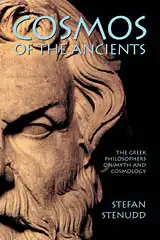 Cosmos of the Ancients
Cosmos of the Ancients
The Greek philosophers and what they thought about cosmology, myth, and the gods.
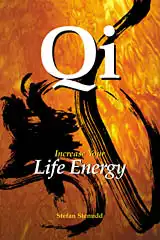 Qi — Increase Your Life Energy
Qi — Increase Your Life Energy
The life energy qi (also chi or ki) explained, with exercises on how to awaken, increase and use it.
 Aikido Principles
Aikido Principles
Basic concepts of the peaceful martial art. Aikido principles, philosophy, and fundamental ideas.
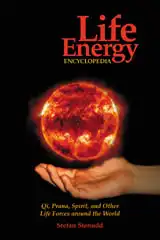 Life Energy Encyclopedia
Life Energy Encyclopedia
Qi, prana, spirit, ruach, pneuma, and many other life forces around the world explained and compared.
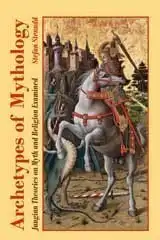 Archetypes of Mythology
Archetypes of Mythology
Jungian theories on myth and religion examined, from Carl G. Jung to Jordan B. Peterson.
 Stefan Stenudd
Stefan Stenudd
About me
I'm a Swedish author and aikido instructor. In addition to fiction, I've written books about Taoism and other East Asian traditions. I'm also an historian of ideas, researching ancient thought and mythology. Click the image to get to my personal website.Contact

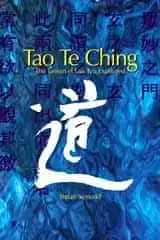 Tao Te Ching
Tao Te Ching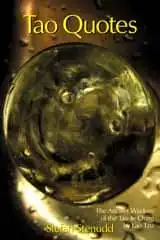 Tao Quotes
Tao Quotes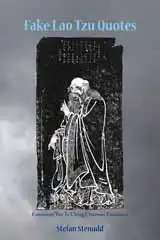 Fake Lao Tzu Quotes
Fake Lao Tzu Quotes